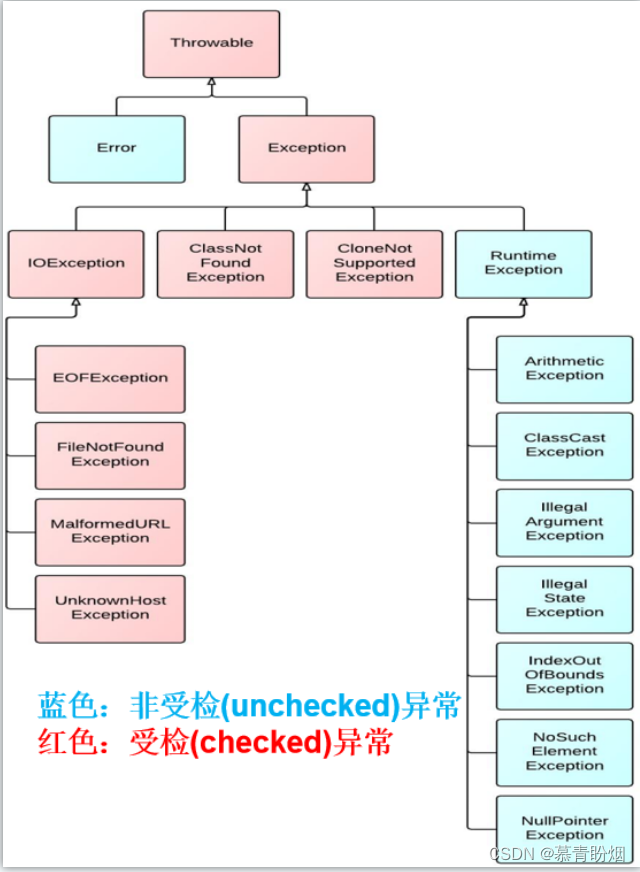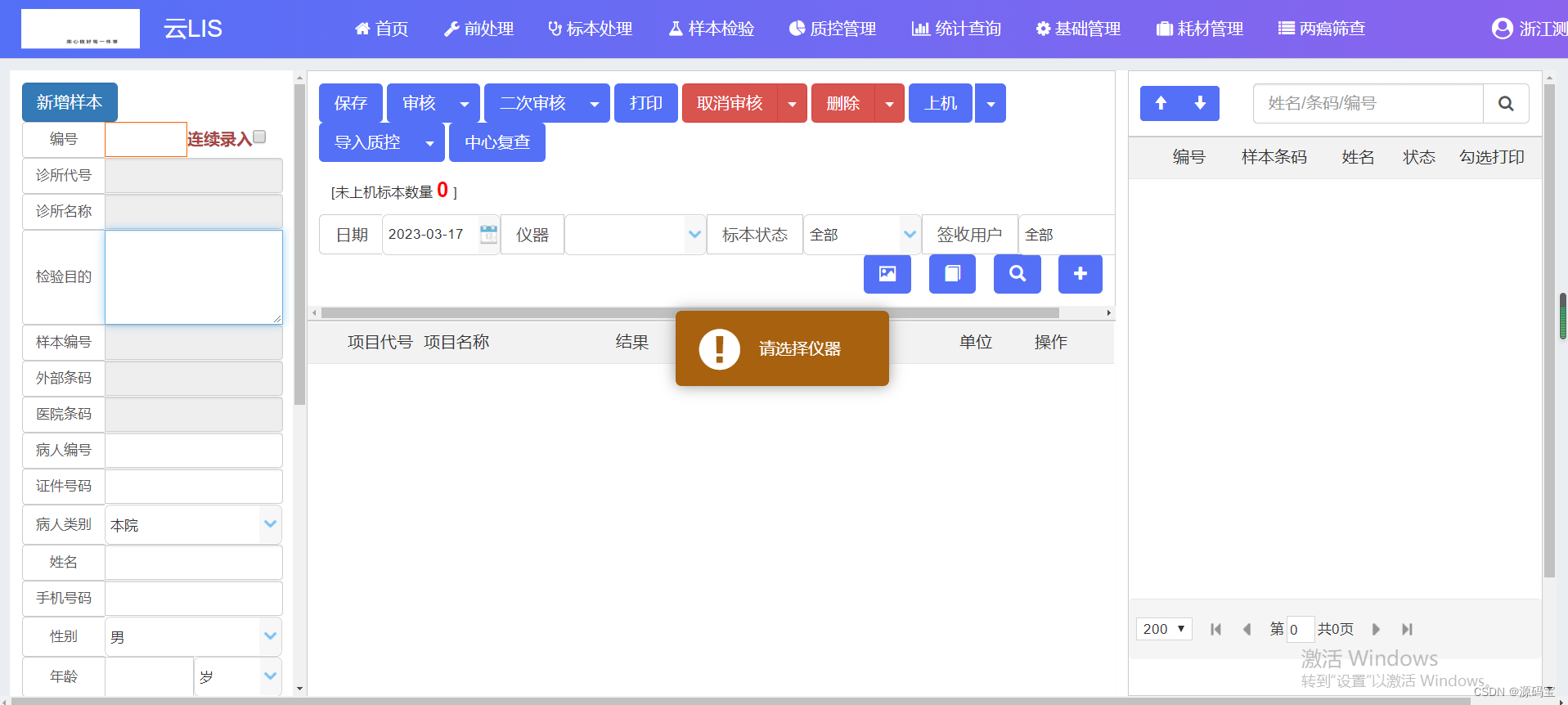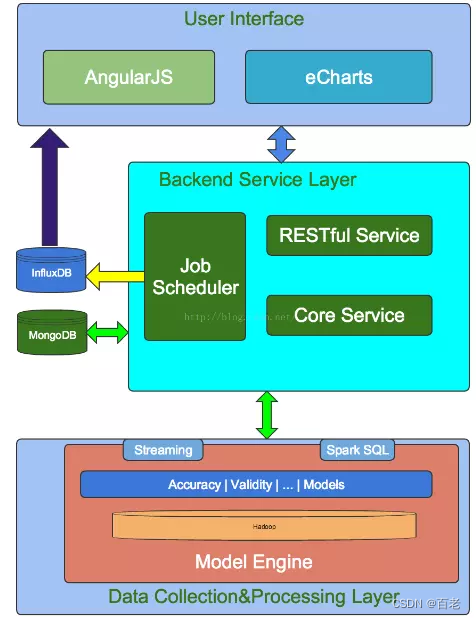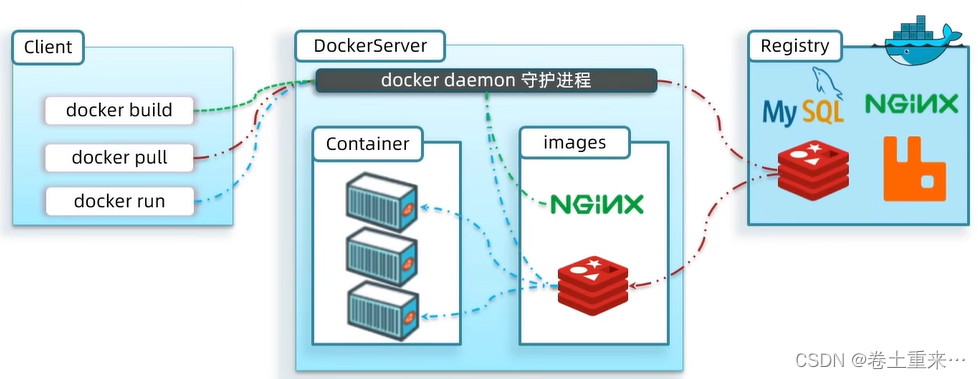目录
2、如何对待异常
3、异常的抛出机制
8.1.2 Java异常体系
1、Throwable
2、Error和Exception
8.1.3 受检异常和非受检异常
演示常见的错误和异常
1、Error
2、运行时异常
3、编译时异常
8.2 异常的处理
8.2.1 捕获异常:try…catch
1、try...catch基本格式
2、JDK1.7try...catch新特性
3、在catch分支中获取异常信息
8.2.2 finally块
1、finally块
2、finally与return
转换异常处理位置:throws
1、throws编译时异常
2、throws运行时异常
3、方法重写对于throws要求
手工抛出异常对象:throw
自定义异常
在使用计算机语言进行项目开发的过程中,即使程序员把代码写得尽善尽美,在系统的运行过程中仍然会遇到一些问题,因为很多问题不是靠代码能够避免的,比如:客户输入数据的格式问题,读取文件是否存在,网络是否始终保持通畅等等。
-
异常 :指的是程序在执行过程中,出现的非正常的情况,如果不处理最终会导致JVM的非正常停止。
异常指的并不是语法错误,语法错了,编译不通过,不会产生字节码文件,根本不能运行.
异常也不是指逻辑代码错误而没有得到想要的结果,例如:求a与b的和,你写成了a-b
package com.day428.Demo01;
/*
*异常指的并不是语法错误,语法错了,编译不通过,不会产生字节码文件,根本不能运行.异常也不是指逻辑代码错误而没有得到想要的结果,例如:求a与b的和,你写成了a-b
*
* */
public class Demo0001 {public static void main(String[] args) {
// 语法错误,编译错误,根本无法运行。
// System.out.println(a);
// System.out.println(add(1,2));
// System.out.println(add("11","23"));}public static int add(int a, int b){return a-b;}
}
package com.day428.Demo01;import java.util.Scanner;
/*
* 避免异常
* 解决异常
*尽量提高代码的可用性,增加判断处理,保证不会输入异常,
* 超出数组下标,类型转换不出现这样的异常
* 2.加异常代码L:try{
* }catch(Exception e){
*
* }
* nextLine(),可以识别除换行外,其它任何字符
*
* */
public class Demo0002 {public static void main(String[] args) {Scanner scanner = new Scanner(System.in);while (true){try{System.out.println("请你输入一个数");int num= scanner.nextInt();int num2 =scanner.nextInt();System.out.println(add1(num,num2));break;}catch (Exception e){scanner.nextLine();System.out.println("请输入整数");}}}public static int add1(int a,int b){return a-b;}
}
2、如何对待异常
程序员在编写程序时,就应该充分考虑到各种可能发生的异常和错误,极力预防和避免,实在无法避免的,要编写相应的代码进行异常的检测、异常消息的提示,以及异常的处理。
3、异常的抛出机制
Java中是如何表示不同的异常情况,又是如何==让程序员得知==,并==处理异常==的呢?
Java中把不同的异常用不同的类表示,一旦发生某种异常,就通过创建该异常类型的对象,并且抛出,然后程序员可以catch到这个异常对象,并处理,如果无法catch到这个异常对象,那么这个异常对象将会导致程序终止。
运行下面的程序,程序会产生一个数组索引越界异常ArrayIndexOfBoundsException。我们通过图解来解析下异常产生和抛出的过程。
package com.day428.Demo01;
/*
*
* ArrayIndexOutOfBoundsException
* 异常抛出机制
*
* */
public class ArrayTools {public static void main(String[] args) {int[] arr ={1,2,3,4,5};
// 1.getElement方法中获取到一个非正常的返回值,而是得到一个异常对象。
// try,...catch捕获
// 如果没有,就到mian中抛出异常,程序中断。ArrayTools.getElement(arr,23);}public static int getElement(int arr[] ,int index){
//int ele =arr[index];
// 程序报错后就停止,创建一个对应的异常类型的对象。
// JVM 会被i这个异常对象抛出。
// 先检测有没有try..catch语句,如果有try...catch语句
// 就是使用try...catch语句中的catch语句捕获这个异常对象,,如果没有,则抛出给调用者。System.out.println("程序停止了");return ele;}
}
8.1.2 Java异常体系
1、Throwable
java.lang.Throwable 类是 Java 语言中所有错误或异常的超类。
-
只有当对象是此类(或其子类之一)的实例时,才能通过 Java 虚拟机或者 Java 的
throw语句抛出。类似地,只有此类或其子类之一才可以是catch子句中的参数类型。
Throwable中的常用方法:
-
public void printStackTrace():打印异常的详细信息。包含了异常的类型,异常的原因,还包括异常出现的位置,在开发和调试阶段,都得使用printStackTrace。
-
public String getMessage():获取发生异常的原因。提示给用户的时候,就提示错误原因。
2、Error和Exception
Throwable有两个直接子类:java.lang.Error与java.lang.Exception,平常所说的异常指java.lang.Exception。
-
Error:表示严重错误,一旦发生必须停下来查看问题并解决问题才能继续,无法仅仅通过try...catch解决的错误。(如果拿生病做比喻,就像是突发疾病,而且是危重症,必须立刻停下来治疗而不是靠短暂休息、吃药、打针、或小手术简单解决处理)
-
例如:StackOverflowError(栈内存溢出)和OutOfMemoryError(堆内存溢出,简称OOM)。
-
-
Exception:表示普通异常,其它因编程错误或偶然的外在因素导致的一般性问题,程序员可以通过代码的方式检测、提示和纠正,使程序继续运行,但是只要发生也是必须处理,否则程序也会挂掉。(这就好比普通感冒、阑尾炎、牙疼等,可以通过短暂休息、吃药、打针、或小手术简单解决,但是也不能搁置不处理,不然也会要人命)。
-
例如:空指针访问、试图读取不存在的文件、网络连接中断、数组下标越界等
-
无论是Error还是Exception,还有很多子类,异常的类型非常丰富。当代码运行出现异常时,特别是我们不熟悉的异常时,不要紧张,把异常的简单类名,拷贝到API中去查去认识它即可。
8.1.3 受检异常和非受检异常
我们平常说的异常就是指Exception,根据代码的编写编译阶段,编译器是否会警示当前代码可能发生xx异常,并督促程序员提前编写处理它的代码为依据,可以将异常分为:
-
编译时期异常(即checked异常、受检异常):在代码编译阶段,编译器就能明确警示当前代码可能发生(不是一定发生)xx异常,并督促程序员提前编写处理它的代码。如果程序员不听话,没有编写对应的异常处理代码,则编译器就会发威,直接判定编译失败,从而程序无法执行。通常,这类异常的发生不是由程序员的代码引起的,或者不是靠加简单判断就可以避免的,例如:FileNotFoundException(文件找不到异常)。
-
运行时期异常(即runtime异常、unchecked非受检异常):即在代码编译阶段,编译器完全不做任何检查,无论该异常是否会发生,编译器都不给出任何提示。只有等代码运行起来并确实发生了xx异常,它才能被发现。通常,这类异常是由程序员的代码编写不当引起的,只要稍加判断,或者细心检查就可以避免的。例如:ArrayIndexOutOfBoundsException数组下标越界异常,ClassCastException类型转换异常。

演示常见的错误和异常
1、Error
最常见的就是VirtualMachineError,它有两个经典的子类:StackOverflowError、OutOfMemoryError。
public class TestStackOverflowError {
public void test01(){
//StackOverflowError
digui();
}public void digui(){
digui();
}
}
public class TestOutOfMemoryError {
public void test02(){
//OutOfMemoryError
//方式一:
int[] arr = new int[Integer.MAX_VALUE];
}
public void test03(){
//OutOfMemoryError
//方式二:
StringBuilder s = new StringBuilder();
while(true){
s.append("haogu");
}
}
}
2、运行时异常
public class TestRuntimeException {public void test01(){//NullPointerExceptionint[][] arr = new int[3][];System.out.println(arr[0].length);}public void test02(){//ClassCastExceptionObject obj = 15;String str = (String) obj;}public void test03(){//ArrayIndexOutOfBoundsExceptionint[] arr = new int[5];for (int i = 1; i <= 5; i++) {System.out.println(arr[i]);}}public void test04(){//InputMismatchExceptionScanner input = new Scanner(System.in);System.out.print("请输入一个整数:");//输入非整数int num = input.nextInt();input.close();}public void test05(){int a = 1;int b = 0;//ArithmeticExceptionSystem.out.println(a/b);}
}3、编译时异常
import org.junit.Test;import java.io.FileInputStream;
import java.io.FileNotFoundException;
import java.sql.Connection;
import java.sql.DriverManager;
import java.sql.SQLException;public class TestCheckedException {public void test06() throws InterruptedException{Thread.sleep(1000);//休眠1秒}public void test07() throws FileNotFoundException {FileInputStream fis = new FileInputStream("Java从入门到精通.txt");}public void test08() throws SQLException {Connection conn = DriverManager.getConnection("....");}
}8.2 异常的处理
Java异常处理的五个关键字:try、catch、finally、throw、throws
8.2.1 捕获异常:try…catch
1、try...catch基本格式
捕获异常语法如下:
try{
可能发生xx异常的代码
}catch(异常类型1 e){
处理异常的代码1
}catch(异常类型2 e){
处理异常的代码2
}
....
try{}中编写可能发生xx异常的业务逻辑代码。
catch分支,分为两个部分,catch()中编写异常类型和异常参数名,{}中编写如果发生了这个异常,要做什么处理的代码。如果有多个catch分支,并且多个异常类型有父子类关系,必须保证小的子异常类型在上,大的父异常类型在下。
当某段代码可能发生异常,不管这个异常是编译时异常(受检异常)还是运行时异常(非受检异常),我们都可以使用try块将它括起来,并在try块下面编写catch分支尝试捕获对应的异常对象。
-
如果在程序运行时,try块中的代码没有发生异常,那么catch所有的分支都不执行。
-
如果在程序运行时,try块中的代码发生了异常,根据异常对象的类型,将从上到下选择第一个匹配的catch分支执行。此时try中发生异常的语句下面的代码将不执行,而整个try...catch之后的代码可以继续运行。
-
如果在程序运行时,try块中的代码发生了异常,但是所有catch分支都无法匹配(捕获)这个异常,那么JVM将会终止当前方法的执行,并把异常对象“抛”给调用者。如果调用者不处理,程序就挂了。
public class TestTryCatch {public static void main(String[] args) {try {int a = Integer.parseInt(args[0]);int b = Integer.parseInt(args[1]);int result = a/b;System.out.println("result = " + result);} catch (NumberFormatException e) {System.out.println("数字格式不正确,请输入两个整数");} catch (ArrayIndexOutOfBoundsException e){System.out.println("数字个数不正确,请输入两个整数");} catch (ArithmeticException e){System.out.println("第二个整数不能为0");}System.out.println("你输入了" + args.length +"个参数。");System.out.println("你输入的被除数和除数分别是:");for (int i = 0; i < args.length; i++) {System.out.print(args[i]+" ");}System.out.println();}
}2、JDK1.7try...catch新特性
如果多个catch分支的异常处理代码一致,那么在JDK1.7之后还支持如下写法:
try{
可能发生xx异常的代码
}catch(异常类型1 | 异常类型2 e){
处理异常的代码1
}catch(异常类型3 e){
处理异常的代码2
}
....
public class TestJDK7 {public static void main(String[] args) {try {int a = Integer.parseInt(args[0]);int b = Integer.parseInt(args[1]);int result = a/b;System.out.println("result = " + result);} catch (NumberFormatException | ArrayIndexOutOfBoundsException e) {System.out.println("数字格式不正确,请输入两个整数");}catch (ArithmeticException e){System.out.println("第二个整数不能为0");}System.out.println("你输入了" + args.length +"个参数。");System.out.println("你输入的被除数和除数分别是:");for (int i = 0; i < args.length; i++) {System.out.print(args[i]+" ");}System.out.println();}
}3、在catch分支中获取异常信息
如何获取异常信息,Throwable类中定义了一些查看方法:
-
public String getMessage():获取异常的描述信息,原因(提示给用户的时候,就提示错误原因。
-
public void printStackTrace():打印异常的跟踪栈信息并输出到控制台。
包含了异常的类型,异常的原因,还包括异常出现的位置,在开发和调试阶段,都得使用printStackTrace。
8.2.2 finally块
1、finally块
因为异常会引发程序跳转,从而会导致有些语句执行不到。而程序中有一些特定的代码无论异常是否发生,都需要执行。例如,IO流的关闭,数据库连接的断开等。这样的代码通常就会放到finally块中。
try{}catch(...){}finally{无论try中是否发生异常,也无论catch是否捕获异常,也不管try和catch中是否有return语句,都一定会执行}或try{}finally{无论try中是否发生异常,也不管try中是否有return语句,都一定会执行。} 注意:finally不能单独使用。
当只有在try或者catch中调用退出JVM的相关方法,例如System.exit(0),此时finally才不会执行,否则finally永远会执行。
import java.util.InputMismatchException;
import java.util.Scanner;public class TestFinally {public static void main(String[] args) {Scanner input = new Scanner(System.in);try {System.out.print("请输入第一个整数:");int a = input.nextInt();System.out.print("请输入第二个整数:");int b = input.nextInt();int result = a/b;System.out.println(a + "/" + b +"=" + result);} catch (InputMismatchException e) {System.out.println("数字格式不正确,请输入两个整数");}catch (ArithmeticException e){System.out.println("第二个整数不能为0");} finally {System.out.println("程序结束,释放资源");input.close();}}
}2、finally与return
finally中写了return语句,那么try和catch中的return语句就失效了,最终返回的是finally块中的
形式一:从try回来
public class TestReturn {public static void main(String[] args) {int result = test("12");System.out.println(result);}public static int test(String str){try{Integer.parseInt(str);return 1;}catch(NumberFormatException e){return -1;}finally{System.out.println("test结束");}}
}形式二:从catch回来
public class TestReturn {public static void main(String[] args) {int result = test("a");System.out.println(result);}public static int test(String str){try{Integer.parseInt(str);return 1;}catch(NumberFormatException e){return -1;}finally{System.out.println("test结束");}}
}形式三:从finally回来
public class TestReturn {public static void main(String[] args) {int result = test("a");System.out.println(result);}public static int test(String str){try{Integer.parseInt(str);return 1;}catch(NumberFormatException e){return -1;}finally{System.out.println("test结束");return 0;}}
}转换异常处理位置:throws
1、throws编译时异常
如果在编写方法体的代码时,某句代码可能发生某个==编译时异常==,不处理编译不通过,但是在当前方法体中可能不适合处理或无法给出合理的处理方式,就可以通过throws在方法签名中声明该方法可能会发生xx异常,需要调用者处理。
声明异常格式:
修饰符 返回值类型 方法名(参数) throws 异常类名1,异常类名2…{ }
在throws后面可以写多个异常类型,用逗号隔开。
public class TestThrowsCheckedException {public static void main(String[] args) {System.out.println("上课.....");try {afterClass();//换到这里处理异常} catch (InterruptedException e) {e.printStackTrace();System.out.println("准备提前上课");}System.out.println("上课.....");}public static void afterClass() throws InterruptedException {for(int i=10; i>=1; i--){Thread.sleep(1000);//本来应该在这里处理异常System.out.println("距离上课还有:" + i + "分钟");}}
}2、throws运行时异常
当然,throws后面也可以写运行时异常类型,只是运行时异常类型,写或不写对于编译器和程序执行来说都没有任何区别。如果写了,唯一的区别就是调用者调用该方法后,使用try...catch结构时,IDEA可以获得更多的信息,需要添加什么catch分支。
import java.util.InputMismatchException; import java.util.Scanner;public class TestThrowsRuntimeException {public static void main(String[] args) {Scanner input = new Scanner(System.in);try {System.out.print("请输入第一个整数:");int a = input.nextInt();System.out.print("请输入第二个整数:");int b = input.nextInt();int result = divide(a,b);System.out.println(a + "/" + b +"=" + result);} catch (ArithmeticException | InputMismatchException e) {e.printStackTrace();} finally {input.close();}}public static int divide(int a, int b)throws ArithmeticException{return a/b;} }
3、方法重写对于throws要求
方法重写时,对于方法签名是有严格要求的:
(1)方法名必须相同
(2)形参列表必须相同
(3)返回值类型
-
基本数据类型和void:必须相同
-
引用数据类型:<=
(4)权限修饰符:>=,而且要求父类被重写方法在子类中是可见的
(5)不能是static,final修饰的方法
(6)throws异常列表要求
-
如果父类被重写方法的方法签名后面没有 “throws 编译时异常类型”,那么重写方法时,方法签名后面也不能出现“throws 编译时异常类型”。
-
如果父类被重写方法的方法签名后面有 “throws 编译时异常类型”,那么重写方法时,throws的编译时异常类型必须<=被重写方法throws的编译时异常类型,或者不throws编译时异常。
-
方法重写,对于“throws 运行时异常类型”没有要求。
import java.io.IOException;public class TestOverride {}class Father{public void method()throws Exception{System.out.println("Father.method");} } class Son extends Father{@Overridepublic void method() throws IOException,ClassCastException {System.out.println("Son.method");} }
手工抛出异常对象:throw
Java程序的执行过程中如出现异常,会生成一个异常类对象,该异常对象将被提交给Java运行时系统,这个过程称为抛出(throw)异常。异常对象的生成有两种方式:
-
由虚拟机自动生成:程序运行过程中,虚拟机检测到程序发生了问题,就会在后台自动创建一个对应异常类的实例对象并抛出——自动抛出。
-
由开发人员手动创建:new 异常类型(【实参列表】);,如果创建好的异常对象不抛出对程序没有任何影响,和创建一个普通对象一样,但是一旦throw抛出,就会对程序运行产生影响了。
使用格式:
throw new 异常类名(参数);
throw语句抛出的异常对象,和JVM自动创建和抛出的异常对象一样。
-
如果是编译时异常类型的对象,同样需要使用throws或者try...catch处理,否则编译不通过。
-
如果是运行时异常类型的对象,编译器不提示。
-
但是无论是编译时异常类型的对象,还是运行时异常类型的对象,如果没有被try..catch合理的处理,都会导致程序崩溃。
throw语句会导致程序执行流程被改变,throw语句是明确抛出一个异常对象,因此它下面的代码将不会执行,如果当前方法没有try...catch处理这个异常对象,throw语句就会代替return语句提前终止当前方法的执行,并返回一个异常对象给调用者。
public class TestThrow {public static void main(String[] args) {try {System.out.println(max(4,2,31,1));} catch (Exception e) {e.printStackTrace();}try {System.out.println(max(4));} catch (Exception e) {e.printStackTrace();}try {System.out.println(max());} catch (Exception e) {e.printStackTrace();}}public static int max(int... nums){if(nums == null || nums.length==0){throw new IllegalArgumentException("没有传入任何整数,无法获取最大值");}int max = nums[0];for (int i = 1; i < nums.length; i++) {if(nums[i] > max){max = nums[i];}}return max;}
}自定义异常
为什么需要自定义异常类:
我们说了Java中不同的异常类,分别表示着某一种具体的异常情况,那么在开发中总是有些异常情况是核心类库中没有定义好的,此时我们需要根据自己业务的异常情况来定义异常类。例如年龄负数问题,考试成绩负数问题等等。
异常类如何定义:
-
自定义一个编译时异常类型:自定义类 并继承
java.lang.Exception。 -
自定义一个运行时异常类型:自定义类 并继承
java.lang.RuntimeException。
注意自定义的异常只能通过throw抛出。
自定义异常:
(1)要继承一个异常类型
(2)建议大家提供至少两个构造器,一个是无参构造,一个是(String message)构造器
(3)自定义异常对象只能手动抛出。抛出后由try..catch处理,也可以甩锅throws给调用者处理。
演示自定义异常
public class NotTriangleException extends Exception{public NotTriangleException() {}public NotTriangleException(String message) {super(message);} }public class Triangle {private double a;private double b;private double c;public Triangle(double a, double b, double c) throws NotTriangleException {if(a<=0 || b<=0 || c<=0){throw new NotTriangleException("三角形的边长必须是正数");}if(a+b<=c || b+c<=a || a+c<=b){throw new NotTriangleException(a+"," + b +"," + c +"不能构造三角形,三角形任意两边之后必须大于第三边");}this.a = a;this.b = b;this.c = c;}public double getA() {return a;}public void setA(double a) throws NotTriangleException{if(a<=0){throw new NotTriangleException("三角形的边长必须是正数");}if(a+b<=c || b+c<=a || a+c<=b){throw new NotTriangleException(a+"," + b +"," + c +"不能构造三角形,三角形任意两边之后必须大于第三边");}this.a = a;}public double getB() {return b;}public void setB(double b) throws NotTriangleException {if(b<=0){throw new NotTriangleException("三角形的边长必须是正数");}if(a+b<=c || b+c<=a || a+c<=b){throw new NotTriangleException(a+"," + b +"," + c +"不能构造三角形,三角形任意两边之后必须大于第三边");}this.b = b;}public double getC() {return c;}public void setC(double c) throws NotTriangleException {if(c<=0){throw new NotTriangleException("三角形的边长必须是正数");}if(a+b<=c || b+c<=a || a+c<=b){throw new NotTriangleException(a+"," + b +"," + c +"不能构造三角形,三角形任意两边之后必须大于第三边");}this.c = c;}@Overridepublic String toString() {return "Triangle{" +"a=" + a +", b=" + b +", c=" + c +'}';} }public class TestTriangle {public static void main(String[] args) {Triangle t = null;try {t = new Triangle(2,2,3);System.out.println("三角形创建成功:");System.out.println(t);} catch (NotTriangleException e) {System.err.println("三角形创建失败");e.printStackTrace();}try {if(t != null) {t.setA(1);}System.out.println("三角形边长修改成功");} catch (NotTriangleException e) {System.out.println("三角形边长修改失败");e.printStackTrace();}} }







